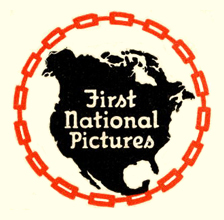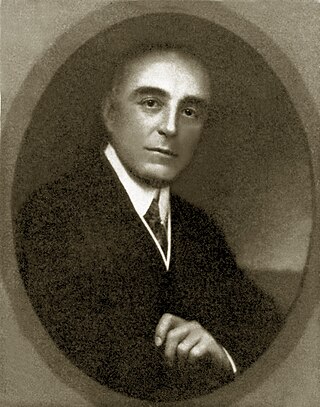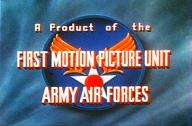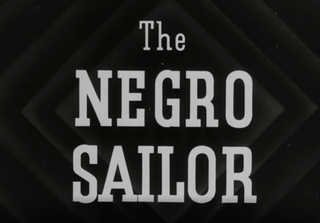Related Research Articles

First National Pictures was an American motion picture production and distribution company. It was founded in 1917 as First National Exhibitors' Circuit, Inc., an association of independent theatre owners in the United States, and became the country's largest theater chain. Expanding from exhibiting movies to distributing them, the company reincorporated in 1919 as Associated First National Theatres, Inc., and Associated First National Pictures, Inc. In 1924 it expanded to become a motion picture production company as First National Pictures, Inc., and became an important studio in the film industry. In September 1928, control of First National passed to Warner Bros., into which it was completely absorbed on November 4, 1929. A number of Warner Bros. films were thereafter branded First National Pictures until July 1936, when First National Pictures, Inc., was dissolved.

20th Century Studios is an American film production company headquartered at the Fox Studio Lot in the Century City area of Los Angeles. Since 2019, it serves as a film production arm of Walt Disney Studios, a division of Disney Entertainment, which is owned by The Walt Disney Company. Walt Disney Studios Motion Pictures distributes and markets the films produced by 20th Century Studios in theatrical markets.

Universal Pictures is an American film production and distribution company owned by Comcast through the NBCUniversal Film and Entertainment division of NBCUniversal.
A feature film or feature-length film is a narrative film with a running time long enough to be considered the principal or sole presentation in a commercial entertainment program. The term feature film originally referred to the main, full-length film in a cinema program that included a short film and often a newsreel. Matinee programs, especially in the US and Canada, in general, also included cartoons, at least one weekly serial and, typically, a second feature-length film on weekends.

Cinema in Canada dates back to the earliest known display of film in Saint-Laurent, Quebec, in 1896. The film industry in Canada has been dominated by the United States, which has utilized Canada as a shooting location and to bypass British film quota laws, throughout its history. Canadian filmmakers, English and French, have been active in the development of cinema in the United States.
Welsh National Opera (WNO) is an opera company based in Cardiff, Wales; it gave its first performances in 1946. It began as a mainly amateur body and transformed into an all-professional ensemble by 1973. In its early days the company gave a single week's annual season in Cardiff, gradually extending its schedule to become an all-year-round operation, with its own salaried chorus and orchestra. It has been described by The New York Times as "one of the finest operatic ensembles in Europe".

Carl Foreman, CBE was an American screenwriter and film producer who wrote the award-winning films The Bridge on the River Kwai and High Noon, among others. He was one of the screenwriters who were blacklisted in Hollywood in the 1950s because of their suspected communist sympathy or membership in the Communist Party.

Pierre Ernest Jules Brulatour was a pioneering executive figure in American silent cinema. Beginning as American distribution representative for Lumiere Brothers raw film stock in 1907, he joined producer Carl Laemmle in forming the Motion Picture Distributing and Sales Company in 1909, effectively weakening the stronghold of the Motion Picture Patents Company, headed by Thomas Edison, a large trust company that was then monopolizing the American film industry through contracts with hand-picked, established studios. By 1911 Brulatour was president of the Sales Company. He was a founder of the Universal Film Manufacturing Company, later known as Universal Pictures.

The 18th AAF Base Unit, originally known as the First Motion Picture Unit, Army Air Forces, was the primary film production unit of the U.S. Army Air Forces (AAF) during World War II, and was the first military unit made up entirely of professionals from the film industry. It produced more than 400 propaganda and training films, which were notable for being informative as well as entertaining. Films for which the unit is known include Resisting Enemy Interrogation, Memphis Belle: A Story of a Flying Fortress and The Last Bomb—all of which were released in theatres. Veteran actors such as Clark Gable, William Holden, Clayton Moore, Ronald Reagan, and DeForest Kelley, and directors such as John Sturges served with the 18th AAF Base Unit. The unit also produced training films and trained combat cameramen.

Mickey Mouse is a series of American animated comedy short films produced by Walt Disney Productions. The series started in 1928 with Plane Crazy and ended in 1953 with The Simple Things. Four additional shorts were released between 1983 and 2013. The series is notable for its innovation with sound synchronization and character animation, and also introduced well-known characters such as Mickey Mouse, Minnie Mouse, Pluto and Goofy.

Basil Herbert Dean CBE was an English actor, writer, producer and director in the theatre and in cinema. He founded the Liverpool Repertory Company in 1911 and in the First World War, after organising unofficial entertainments for his comrades in the army, he was appointed do so officially. After the war he produced and directed mostly in the West End. He staged premieres of plays by writers including J. M. Barrie, Noël Coward, John Galsworthy, Harley Granville-Barker and Somerset Maugham. He produced nearly 40 films, and directed 16, mainly in the 1930s, with stars including Gracie Fields.

Reginald Eric Hill was an English model-maker, art director, producer, and freelance storyboard artist. He is most prominently associated with the work of Gerry Anderson.
James Searle Dawley was an American film director, producer, screenwriter, stage actor, and playwright. Between 1907 and the mid-1920s, while working for Edison, Rex Motion Picture Company, Famous Players, Fox, and other studios, he directed more than 300 short films and 56 features, which include many of the early releases of stars such as Douglas Fairbanks, Mary Pickford, Pearl White, Marguerite Clark, Harold Lloyd, and John Barrymore. He also wrote scenarios for many of his productions, including one for his 1910 horror film Frankenstein, the earliest known screen adaptation of Mary Shelley's 1818 novel. While film direction and screenwriting comprised the bulk of Dawley's career, he also had earlier working experience in theater, performing on stage for more than a decade and managing every aspect of stagecraft. Dawley wrote at least 18 plays as well for repertory companies and for several Broadway productions.
Richard Brian Fawkes was an English writer and director.

The Negro Sailor is a 1945 documentary short film made for the U.S. Navy and shown by All-American News, a company producing newsreels and later feature films for the race film market. It was directed by Henry Levin. The film was inspired by the success of the film The Negro Soldier, and was one of only five films documenting the war time activities of African Americans in a positive light before 1950. Released after the surrender of Japan the film highlights the service of African Americans seaman.
The United States Naval Photographic Science Laboratory (NPSL) was opened in the midst of the Second World War, on 24 February 1943, at the Anacostia Naval Air Station, Washington, D. C. It was established under the military command of the Chief of the Navy's Bureau of Aeronautics, Division of Photography, with the mission of centralizing the production and preservation of all naval related photography operations.
References
- 1 2 British Film and Television Yearbook (1952). "HOPKINS, A. E. C." Volume 4, 178.
- ↑ The Cine-Technician (May 1935). Vol. 1, Number 1, p. 9
- ↑ Low, Rachel (2004). History of British Film, Vol. 7, p. 107. Routledge
- ↑ Fawkes, Richard (2000). Opera on Film, p. 99. Duckworth
- ↑ National Interest Picture Productions, British Film Institute, archived from the original on 17 March 2010, retrieved 24 February 2013
- ↑ Imperial War Museum Collections Catalogue. "National Interest Picture Productions"
- ↑ Bentley, Chris (2002). "Lot 147: The Property of the Late Reg Hill, Producer for Century 21 Films". Christie's
- ↑ The London Gazette (31 January 1978). "Notices to Creditors", p. 1307